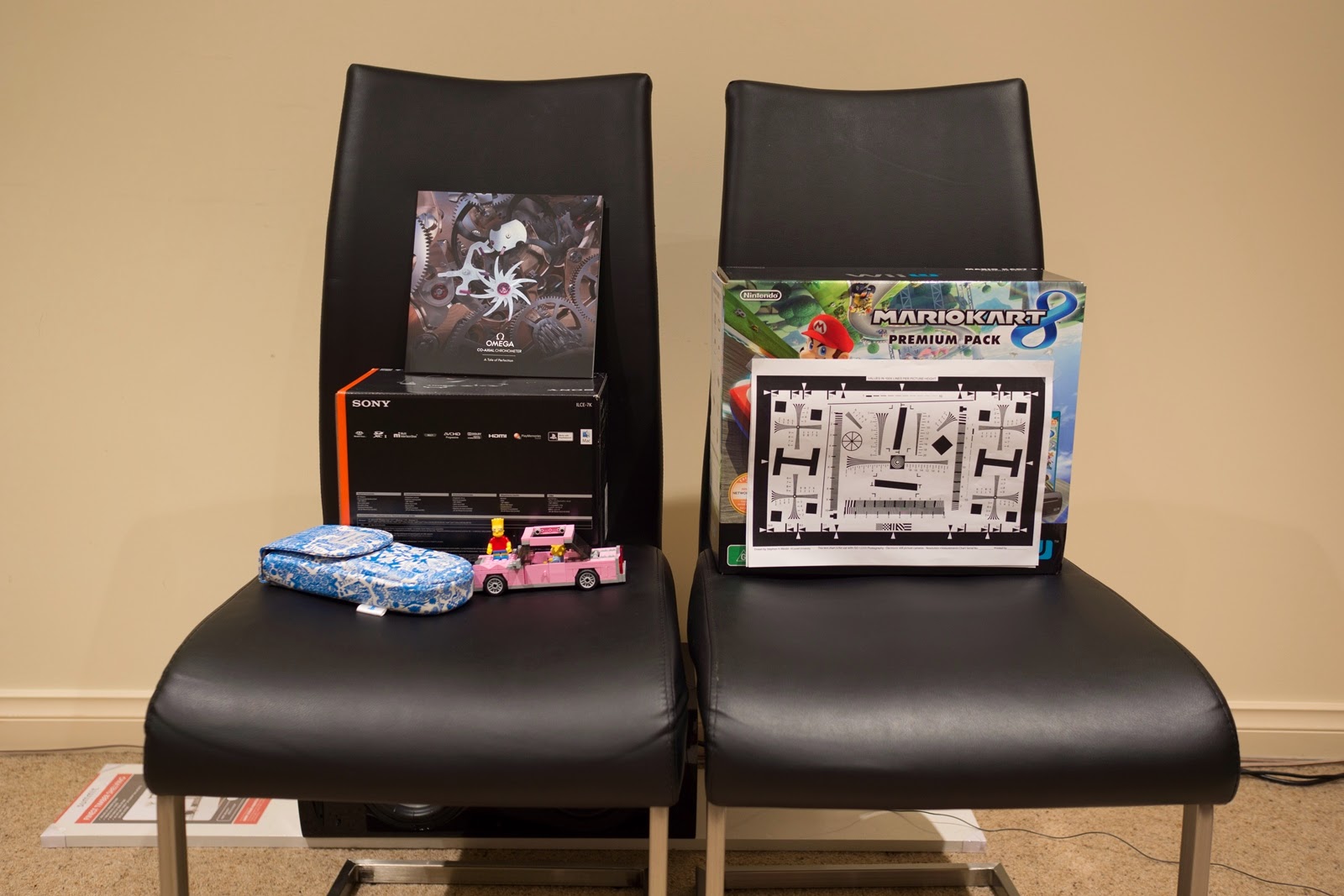Our first contender is the Nikon D600, equipped with the Sigma ART 35mm F/1.4. The D600 is Nikon's first affordable full-frame DSLR, with a 24 megapixel sensor and relatively small body for a full frame camera. The Sigma ART 35mm is widely acknowledged as an excellent lens, rated above both Nikon and Canon equivalents.
Our second contender is the Sony A7 with Sony Zeiss 35mm F/2.8. This is the smallest full-frame autofocus interchangeable lens camera package you can get with 35mm equivalent view. Also a high quality 24 megapixel sensor and a body so small that you can't believe it's full frame. The Zeiss has also been very well received and reviewed, with many praising it for sharpness, but also complaining about lack of large aperture.
The last is a bit older, which is the Sony NEX-7 equipped with the Sony Zeiss 24mm F/1.8. This still comes in lighter weight and smaller than the Sony A7 package, but of course it is only APS-C crop frame. The Zeiss lens has also been well reviewed, with the common complaint just being it is too expensive for what it is. A 24mm F/1.8 makes it pretty much equivalent to a 35mm F/2.8 in terms of depth-of-field equivalence.
 |
| Camera Comparison - Nikon D600, Sony A7, Sony NEX-7 |
General Sharpness
The test scene was shot from a tripod, under relatively consistent lighting conditions, and the following parameters:
- All 24 megapixel sensors.
- 35mm equivalent field of view prime lenses.
- ISO 100, for best possible quality.
- Aperture priority mode, set to F/2.8.
- Shutter speed selected by the camera's own metering.
- Autofocus using live-view, targeting the camera test chart centre.
Here are the individual shots, and will be followed with 100% crop comparisons.
 |
| Nikon D600 with Sigma ART 35mm - General Scene |
 |
| Sony A7 with Zeiss 35mm - General Scene |
 |
| Sony NEX-7 with Zeiss 24mm - General Scene |
The first 100% crop comparison focuses into the camera test chart. Each camera shows a bit of colour artefacting with the very dense lines on the page. The Sony NEX-7 is clearly inferior to the other two, with the image being softer.
Between the Sony A7 and Nikon D600, I'd slightly favour the A7, as it seems the lines and the texture of the paper are more crisp in the Sony A7 crop.
The colour artefacts are less wide-spread on the A7, but the area around the 6 mark is very obvious, whereas the D600 has artefacts that are less distracting. The NEX-7 with its general softness hides most of the colour issues.
 |
| 100% Crop Comparison - Camera Test Chart Scene |
The second comparison scene is also a 100% crop, focused on the Lego Simpsons car. This scene produces an obvious winner, with the Nikon D600 showing a much more sharp and crisp image. The Sony A7 and NEX-7 come in second and third respectively, again showing obvious performance differences.
With this level of difference between the D600 and A7, I'd suspect there may have been some minor differences in the focus.
 |
| 100% Crop Comparison - Lego Simpsons Car |
Dynamic Range
One other significant performance indicator that is important for me, is the dynamic range of the camera sensors. In previous comparisons, I had found the D600 to have a clear performance improvement over the NEX-7, probably attributed to the fact that the full frame sensor simply has more area to work with. This raises the question whether the A7, also with a full frame 24 megapixel sensor, could be better.
The follow comparison was done with the following parameters:
- Lights off
- Wii U Gamepad with screen on
- Manual exposure settings, ISO 100, F/2.8, shutter speed 0.5 seconds.
- Lightroom post-processing with +100 Shadow Recovery, -50 Highlight Recovery, + 1.0 exposure.
 |
| Nikon D600 - Dark Dynamic Exposure Test |
 |
| Sony A7 - Dark Dynamic Exposure Test |
 |
| Sony NEX-7 - Dark Dynamic Exposure Test |
The results from this test first confirm that the NEX-7 is at a disadvantage, with much higher noise in the shadow areas, serious colour shift towards green, and unable to recover the text displayed on the Wii U gamepad.
The Nikon D600 still manages to defeat the Sony A7, with better controlled noise around the shadow areas. Recovery of the blown highlights on the Wii U gamepad seem equal, although slightly sharper on the D600.
For reference, this is what the scene looked like before any post-processing:
 |
| Dark Dynamic Exposure Test, as shot without post-processing |
Conclusions
Cameras are getting better every day, and the Sony A7 was a significant breakthrough in getting a full frame interchangeable camera into such a small package. The performance champion in this comparison is still the Nikon D600, if size is no issue. Also keep in mind that the D600 itself is still a pretty small package for a full frame DSLR.
For my own shooting preferences, I have found that the Sony A7 satisfies my photographic needs 90% of the time, and that's what I'm carrying most often.
 |
| Size comparison of the Nikon D600, Sony A7, and Sony NEX-7 |


